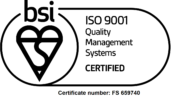When should I put the travel socks on?
Ideally first thing in the morning, as soon as you get out of bed, do not wait until you get on the plane as your ankles may have already swollen and the socks will feel uncomfortable.
Can I take them off as soon as I get off the flight?
It would be better to wait for at least an hour after disembarking from the plane before you take them off.
Are they available on prescription?
Travel socks, as such, are not available on prescription, however Class 1 (18-21mmHg) medical compression socks are available on prescription in the following cases:
- varicose veins (including during pregnancy)
- venous leg ulcers (for treatment and prevention)
- after deep vein thrombosis (DVT)
- superficial thrombophlebitis (inflamed veins)
- lymphoedema (swelling of body tissues)
Should everyone wear compression socks when they travel?
If you fall into one of the risk categories below then we recommend wearing medical grade compression.
| Low risk | Medium risk | High risk |
| Over 40 years old Overweight Very tall or short Recent minor leg injury Leg swelling Recent minor surgery | Recent heart disease Pregnancy Oral contraceptives Hormone replacement therapy Recent major leg injury Recent major surgery Family history of DVT | Previous or current DVT Known clotting tendency Recent major surgery (hip or knee surgery), stroke or cancer Paralysed lower limbs |
Can I wear the antiembolism stockings I was given in the hospital?
No. The stockings you are given when in hospital are for bed bound immobile patients whose legs remain at the same level as their heart. Medical grade graduated compression socks are designed to provide graduated compression to an upright leg (sitting or standing).
Apart from wearing compression socks do you have any further advice?
Keep flexing the calf muscle when immobile. Try not to drink too much alcohol and do not wear tight clothing.
Can you get DVT on a coach trip?
Yes any situation where you find yourself sitting in cramped conditions without moving. Deep vein thrombosis can affect anyone who sits still for long periods of time – at work, at home or when travelling.
What should I do if I think I have any of the symptoms?
Act quickly. The faster you see your GP or go to A&E the more chance you have of preventing a pulmonary embolism.
Which travel socks should I buy?
You need to consider size and degree of compression which is described in mmHg. If you do not fall in the high risk category then between 18-21mmHg will be sufficient. If you fall into one of the risk categories, speak to your GP, you may need a higher compression.
Should everyone wear compression socks when they travel?
We recommend that everyone over the age of 40 wears compression stockings. Age is the strongest risk factor for venous thrombosis. There is evidence to show that deep venous valves change with age, with thicker valves in older individuals.
How do I know if I have the right size stocking?
We recommend you measure your ankle and calf first thing in the morning to make sure you get the right size. If necessary, take advice on fitting from a pharmacist or supplier. Socks that are too loose have no effect. If too tight, they could compress veins and make matters worse. Your ankle and calf measurements are the key to choosing the right sock.







